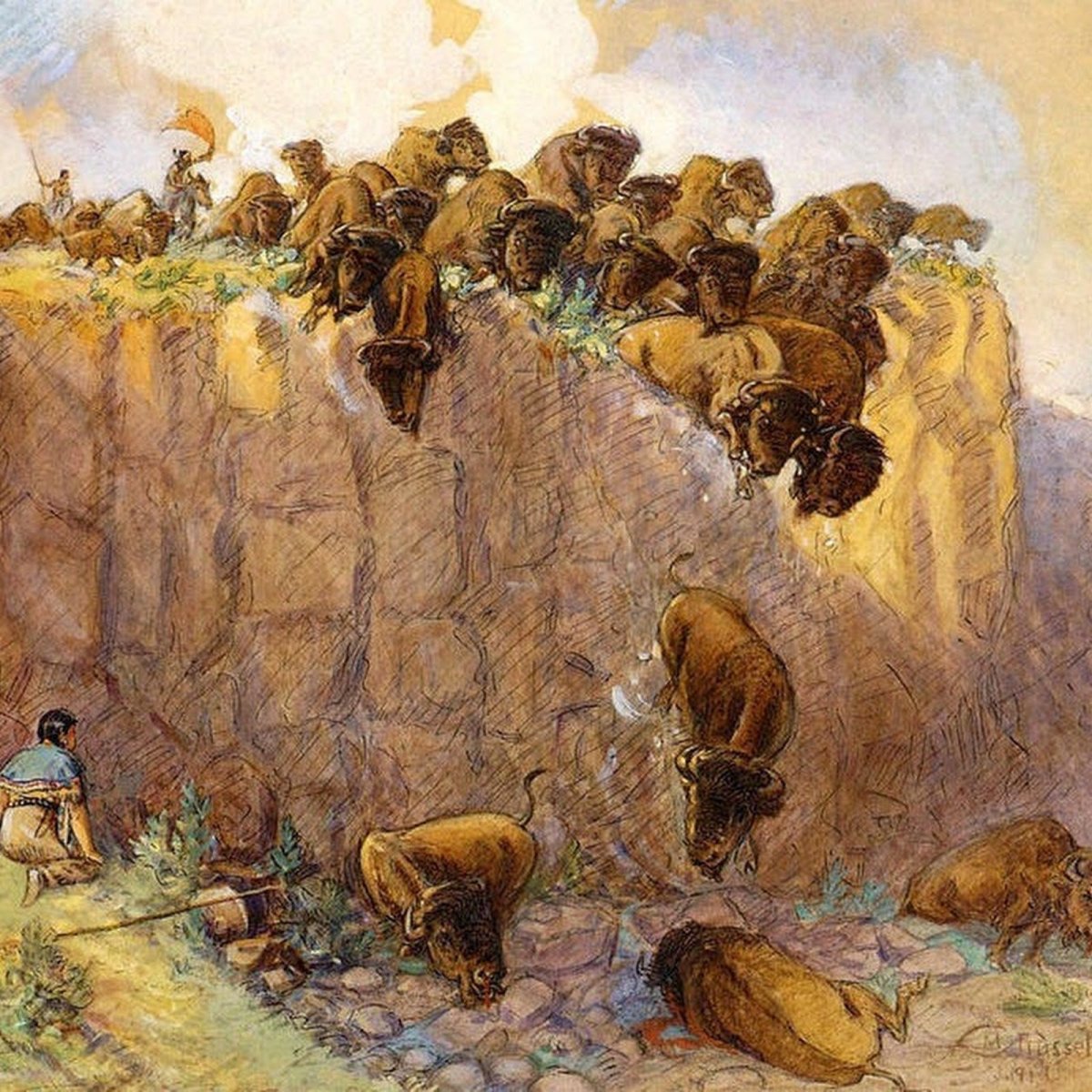The Buffalo Jump and Pound
 In early 1792, Peter Fidler departed Buckingham House (present day Fort George\Buckingham House Provincial Historic Site, Alberta) and began his exploration and survey of the northern great plains along the Rocky Mountains. On November 30th, Fidler passed what he described as a former Buffalo Pound. Five days later, on December 5th, 1792, Fidler came to another buffalo pound and jump and recorded one of the earliest descriptions of a buffalo jump\pound and how they were utilized by the Blackfoot people.
In early 1792, Peter Fidler departed Buckingham House (present day Fort George\Buckingham House Provincial Historic Site, Alberta) and began his exploration and survey of the northern great plains along the Rocky Mountains. On November 30th, Fidler passed what he described as a former Buffalo Pound. Five days later, on December 5th, 1792, Fidler came to another buffalo pound and jump and recorded one of the earliest descriptions of a buffalo jump\pound and how they were utilized by the Blackfoot people.
“At 9 am we resumed our journey, and went SSE ½ E 5 miles, and crossed a creek a little above, a high steep face of rock, on the East Bank of the Creek, which the Indians use occasionally as the purpose of a Buffalo pound, by driving whole herds before them and breaking their deep necks – in the fall, which is perpendicular about 40 feet – vast quantities of Bones was laying there That had been drove before the rock. These kind of places in the plains are very useful for the Indians. Where no wood is to had to make one of – dry Buffalo dung is piled up about knee high and about the distance of 30 yards from each other and at the rock [cliff] the 2 sides are not more than 20 yards [apart] as [illegible], but they spread gradually wider all the way from the rock that at the other end the piles of Dry Buffalo dung will be 1 or 2 miles wide – The men drives the Buffalo within this kind of fence all the way to the rock and by the great way the Buffalo makes, they are at the brink of the precipice before they are aware of the Danger – and some men lie down flat on the Ground near the Dead Men and rise up as the Buffalo passes them and follows them with all speed, to keep them constantly on the run – [if that] was not the case – the Buffalo perceive the danger and avoid it by turning upon one side or the other – all through these extensive plains, several of these steep perpendicular rocks are to be seen, which the Indians never fail to make proper use of for Killing the Buffalo – they seem to have been designed by nature for that purpose – where no woods are to be seen …”
Performing an 18th Century survey was tedious and required a keen awareness to calculate distance travelled. This is especially true on open grassland where estimated distances are difficult to estimate with, at times, no ground reference. We can, however, determine his approximate location utilizing the latitude and the few bearings to known features that he did record. Clearly Fidler was on the Red Deer River and may have been close to present day Dry Island Buffalo Jump Provincial Park, Alberta. Peter Fidler eventually traveled into the Livingston Range in south western Alberta where he would spend the winter with the Blackfoot People, recoding their customs and the environment he was surrounded by.
